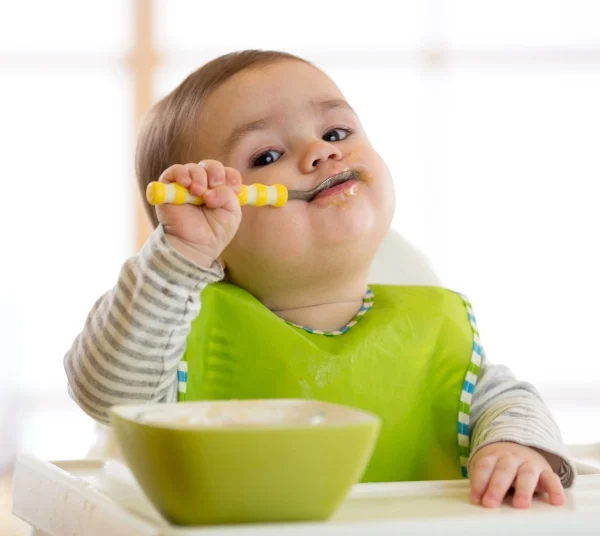Breast feeding your child is important for you, your baby as well as the special bond you two share. Breast feeding the new born is a characteristic of every mammal on the earth and your body prepares itself for supporting breastfeeding as soon as you deliver your child. If you are not suffering from problems like lack of breast milk production or sore breasts, it is best to continue breastfeeding at least for the first 6 months after the birth of your child.
In these 6 months the basic immunity of your child is formed and the mother’s milk plays the most vital role in building the immunity. Hence unless there is a lack of breast milk production you should continue breastfeeding at least for the first 6 months. After 6 months you can slowly start the process of weaning.
Stop breastfeeding gradually
If you want to stop breast feeding it is important that you do it gradually. Stopping breast feeding all together will not only make it difficult to comfort your child, but will also increase the risk of complications in your body. Engorgement of breasts, mastitis and plugged ducts are some of the common issues that might affect you if you stop breast feeding your child abruptly. So, take the gradual approach and make it step by step.
You also need to keep in mind that breastfeeding is very important for your child not only for getting proper nutrition, but also to feel secured and close to you. For every child breastfeeding is a comforting experience and hence stopping breast feeding abruptly might affect the child negatively as well. If you are trying to stop breastfeeding your child, follow the next steps and be patient.
How long it will take to stop the breastfeeding varies for every child and every child adjusts with it in her own pace. It is important that you give your child the time she needs and do not hurry up to end the process quickly.
Stage 1
Give your baby a complete breast feed and after she is full offer her a small part of solid food that is suitable for her. Make sure that the food is easy to chew and digest. Introducing your baby to different tastes and varieties is a great way to make her more interested about other foods than breast milk. Give her different types of foods with different tastes and textures at different times, so that having something other than breast milk becomes interesting for her.
Stage 2
Once you start noticing that your baby is taking interest in other foods as well than breast milk and is eating solid foods properly, you can slowly start reducing the breast feeding. If you breast feed your child 6 times a day, to start with, offer her other foods before breastfeeding at least for 2 times a day. If she has been picking the taste from the first stage, it is most likely that she will start filling herself with the solid food. If it seems that even after having the solid foods your child is not filled, follow with breast feeding after she has taken the other foods. Also make sure that your child is having sufficient amount of water when you are reducing the number of breast feeds, because the other foods will not have the same amount of water as the mother’s milk and hence providing added water to the baby is important as soon as you start reducing the number of breast feeds.
Stage 3
The process is to slowly reduce the number of breastfeed you have been giving to your child and you need to replace the food intelligently with other foods. If it seems that your child still prefers milk, you can always give her formula milk instead of breastfeed. While reducing the number of breastfeed it is important that you maintain a close watch for the emotional needs of your child and if required give her at least 1-2 breastfeeds a day for the time being and be patient.
Stage 4
The process of breast weaning can take anything between few weeks to 6 months or even a whole year of time and hence it is really important for you to be patient. Once your child seems to be okay with 1-2 breastfeeds a day start skipping days in-between and then slowly skip weeks.
Note: One of the most important things that you need to keep in mind while stopping breast feeding is the nutritional needs of your baby. If you stop breastfeeding and still she is not very comfortable with other foods or formula milk then it is surely going to harm her health and body weight. So, when you are on the process of weaning your baby from your breast make sure to take her weight frequently to ensure that she is not losing weight because her nutritional needs are not fulfilled.
Baby led weaning
Baby led weaning is another way of stopping breast feeding your child which is suggested by many gynecologists particularly because it takes the maximum care of the emotional needs of the child. Unless you have a reason to stop breast feeding your child, like you are joining your work, you can continue breast feeding as long as you and your child wants. In fact, there is no medical issue if you continue breast feeding your child even when she is a toddler of 2-3 years.
Baby led weaning particularly depends on the liking and needs of the child and is fully regulated by the child herself. However, even if you are opting for child led weaning, you need to make sure that you let her know that it is the time she should stop. You can stop offering her breast feeding,and instead provide her other foods that she might find tasty. Let her ask you for breastfeeding instead of offering it to her.
Stopping breastfeeding to your toddler
When your child is already a toddler and having all his nutritional needs properly filled from normal meals but yet wants to continue breastfeeding, it might be really difficult for you to stop the process. As already mentioned, breastfeeding is not only a way of filling the nutritional needs of your child, and as your child starts having other meals, breast feeding becomes more of an emotional support that your child needs.
So, if your child is already a toddler over 3 and yet do not want to stop breast feeding the best way is to reason with her. Instead of giving her a feed whenever she wish, tell her to give it at a later time. If she does not remember, simply skip it. At this stage you can also quicken the weaning process by letting your child know that you cannot breastfeed her for a particular span, like a week because you are going on a trip or some other health reasons that is evident to her.
During this span, she might need more mommy time and you will have to comfort her in every other possible way so that she does not feel down or detached from you emotionally. Often even the toddlers who have stopped frequent breastfeeding might need it when they are ill; in such situations it all depends on the understanding between you and your child to determine the frequency of breastfeeding.
Once your child is of the age that you can reason with her, inform her that breastfeeding for long can harm her teeth hence she should stop it now to enjoy a good oral health.
Note: The process of stopping breastfeeding to your child might take an emotional toll on you as well, but it is really important for you to understand that the emotional bond between you two is much deeper than just breastfeeding and stopping breastfeeding does not mean that your child will go away from you. Spend more time with your child and things will be completely normal.





